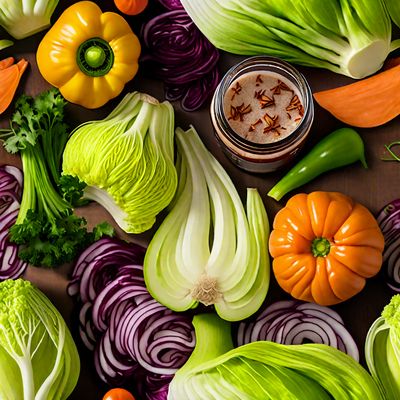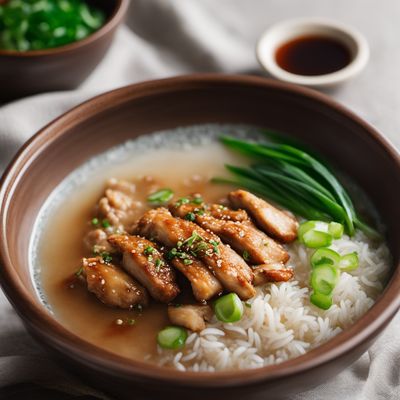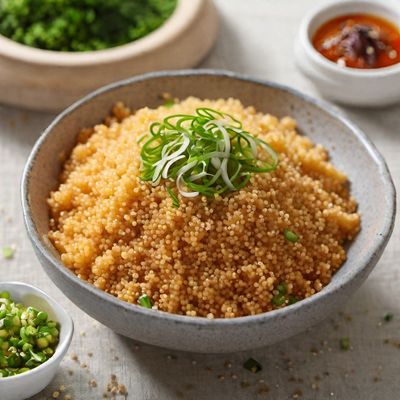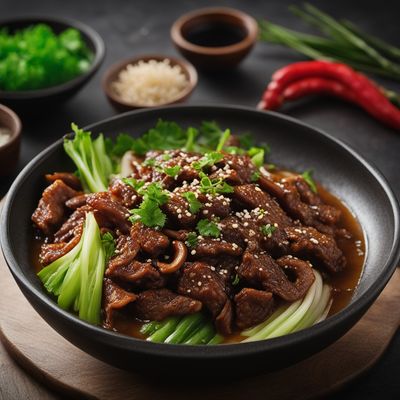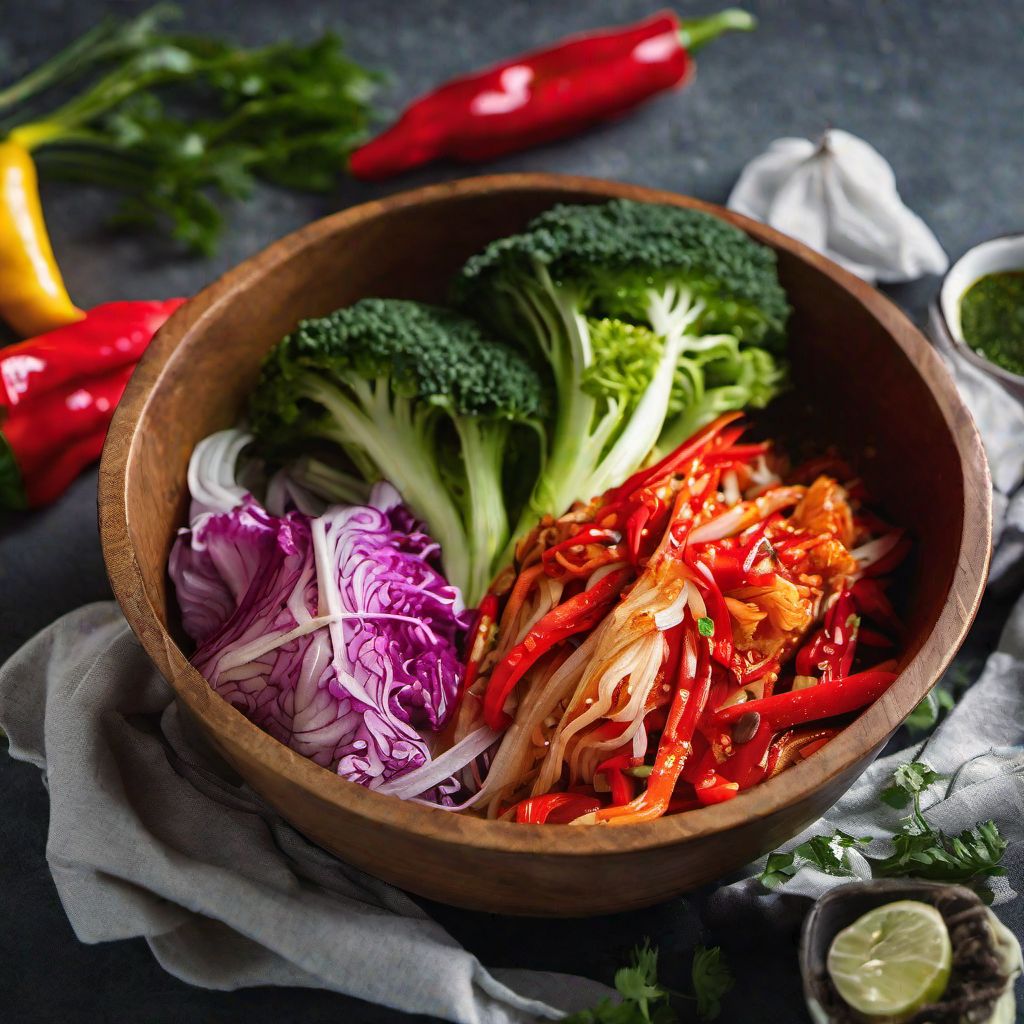
Recipe
Argentinian-style Kimchi
Tango-infused Kimchi: A Spicy Twist from Argentina
4.8 out of 5
In the vibrant world of Argentinian cuisine, we bring you a unique fusion of flavors with our Argentinian-style Kimchi. This fiery and tangy condiment is a delightful blend of traditional Korean kimchi and the bold spices of Argentina. Get ready to tango with your taste buds as we take you on a culinary journey like no other.
Metadata
Preparation time
30 minutes
Cooking time
5 minutes
Total time
35 minutes (plus fermentation time)
Yields
4 servings
Preparation difficulty
Easy
Suitable for
Vegetarian, Vegan, Gluten-free, Dairy-free, Low calorie
Allergens
Garlic, Soy
Not suitable for
Paleo, Keto, Nut-free, Soy-free, Egg-free
Ingredients
While the original Korean kimchi is known for its pungent and fermented flavors, our Argentinian-style Kimchi adds a touch of Argentinian flair. We incorporate ingredients commonly found in Argentinian cuisine, such as red bell peppers and oregano, to give it a distinct taste. The result is a harmonious fusion of Korean and Argentinian flavors that will leave you craving for more. We alse have the original recipe for Kimchi, so you can check it out.
-
1 medium Napa cabbage (about 2 pounds / 900g) 1 medium Napa cabbage (about 2 pounds / 900g)
-
1/4 cup (60ml) coarse sea salt 1/4 cup (60ml) coarse sea salt
-
1 tablespoon (15ml) sugar 1 tablespoon (15ml) sugar
-
1 tablespoon (15ml) paprika 1 tablespoon (15ml) paprika
-
1 tablespoon (15ml) dried oregano 1 tablespoon (15ml) dried oregano
-
1 tablespoon (15ml) red pepper flakes 1 tablespoon (15ml) red pepper flakes
-
1 red bell pepper, thinly sliced 1 red bell pepper, thinly sliced
-
4 cloves garlic, minced 4 cloves garlic, minced
-
1 tablespoon (15ml) ginger, grated 1 tablespoon (15ml) ginger, grated
-
2 green onions, chopped 2 green onions, chopped
-
2 tablespoons (30ml) soy sauce 2 tablespoons (30ml) soy sauce
-
2 tablespoons (30ml) rice vinegar 2 tablespoons (30ml) rice vinegar
-
1 tablespoon (15ml) olive oil 1 tablespoon (15ml) olive oil
Nutrition
- Calories (kcal / KJ): 45 kcal / 188 KJ
- Fat (total, saturated): 2g, 0g
- Carbohydrates (total, sugars): 6g, 2g
- Protein: 2g
- Fiber: 3g
- Salt: 1.5g
Preparation
-
1.Cut the Napa cabbage into quarters lengthwise and remove the core. Chop the cabbage into bite-sized pieces.
-
2.In a large bowl, combine the cabbage, sea salt, and sugar. Massage the cabbage for about 5 minutes until it starts to release its juices. Let it sit for 30 minutes.
-
3.Rinse the cabbage under cold water to remove excess salt. Squeeze out any remaining liquid and transfer the cabbage to a clean bowl.
-
4.In a small bowl, mix together the paprika, dried oregano, and red pepper flakes. Set aside.
-
5.Heat the olive oil in a pan over medium heat. Add the minced garlic, grated ginger, and sliced red bell pepper. Sauté for 2-3 minutes until fragrant.
-
6.Add the sautéed mixture to the bowl of cabbage. Add the green onions, soy sauce, rice vinegar, and the spice mixture. Mix well to combine.
-
7.Pack the kimchi tightly into a clean jar, pressing it down to remove any air bubbles. Leave about 1 inch (2.5cm) of headspace at the top.
-
8.Cover the jar loosely with a lid and let it ferment at room temperature for 2-3 days. After that, refrigerate for at least 1 week before consuming.
Treat your ingredients with care...
- Napa cabbage — Make sure to thoroughly rinse the cabbage after salting to remove excess salt and prevent the kimchi from becoming too salty.
- Red bell pepper — Choose a ripe and vibrant red bell pepper for a sweet and colorful addition to the kimchi.
- Ginger — Use fresh ginger for the best flavor. Grate it finely to evenly distribute its zesty taste.
- Soy sauce — Opt for a low-sodium soy sauce if you prefer a less salty kimchi.
- Rice vinegar — Look for unseasoned rice vinegar to avoid any unwanted flavors in the kimchi.
Tips & Tricks
- For a spicier kimchi, increase the amount of red pepper flakes according to your preference.
- Allow the kimchi to ferment for longer if you prefer a stronger and more tangy flavor.
- Serve the kimchi as a side dish to grilled meats or incorporate it into sandwiches and wraps for an extra kick.
- Adjust the seasoning to your taste by adding more soy sauce or vinegar if desired.
- Store the kimchi in the refrigerator for up to 1 month to maintain its freshness.
Serving advice
Serve the Argentinian-style Kimchi as a vibrant and spicy condiment alongside traditional Argentinian dishes like empanadas or grilled meats. It adds a tangy and fiery kick that complements the flavors of the main course.
Presentation advice
Present the Argentinian-style Kimchi in a small bowl or jar, showcasing its vibrant red color and enticing aroma. Garnish with a sprinkle of dried oregano or a few slices of red bell pepper for an extra touch of visual appeal.
More recipes...
For Kimchi » Browse all
For Korean cuisine » Browse all
More Korean cuisine dishes » Browse all

Bulgogi
Bulgogi is a Korean dish that is made with marinated beef that is grilled or stir-fried. It is a popular dish in Korea and is enjoyed by many...
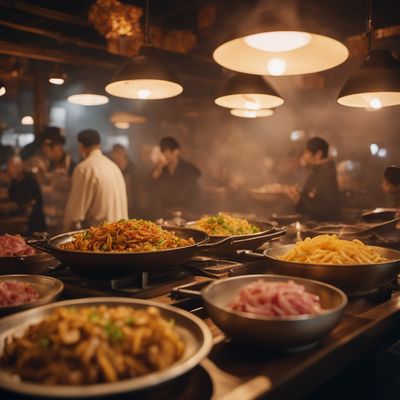
Gamja-haem-bokkeum
Stir-fried potatoes and ham
Gamja-haem-bokkeum is a Korean dish that is made with stir-fried potatoes and ham. It is a popular side dish that is easy to make and is perfect...

Myeolchi bokkeum
Spicy Stir-Fried Anchovies
Myeolchi bokkeum is a Korean side dish made with dried anchovies that are stir-fried in a sweet and savory sauce. It is a popular banchan (side...
More Argentinian cuisine dishes » Browse all

Colchón de arvejas
Pea Puree with Eggs and Vegetables
Colchón de arvejas is a traditional Argentinean dish that is made with peas, ham, and cheese. This dish is hearty, flavorful, and easy to make,...
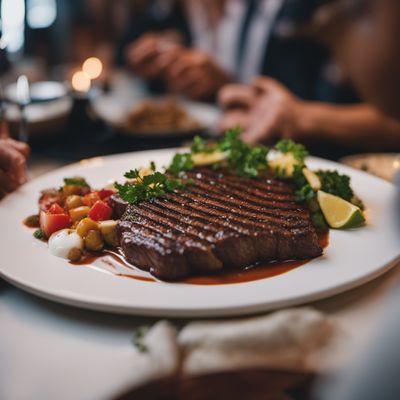
Entraña
Skirt steak
Entraña is a popular cut of beef in Argentina. It is known for its tenderness and rich flavor.

Milanesa napolitana
Neapolitan Milanesa
Milanesa napolitana is a popular dish in Argentina that features a breaded and fried beef cutlet topped with tomato sauce, ham, and melted cheese....


